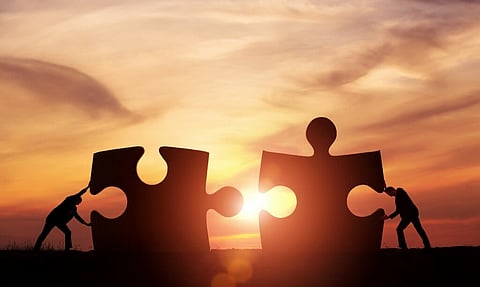
- Home
- Live Blog
- Breaking News
- Top Headlines
- Cities
- NE News
- Sentinel Media
- Sports
- Education
- Jobs

Dr BK Mukhopadhyay
A noted management economist and an international commentator on business and economic affairs. He may be reached at m.bibhas@gmail.com
T he global Gross Domestic Product (GDP) is due to expand by more than 3 per cent this year and next, according to the UN World Economic Situation and Prospects (WESP), an improved outlook compared with the 3 per cent and 3.1 per cent growth for 2018 and 2019, forecast six months ago. The revision reflects strong growth in developed countries due to accelerating wage increases, broadly favourable investment conditions and the short-term impact of a fiscal stimulus package in the United States. At the same time, widespread increase in global demand has accelerated the overall growth in trade, while many commodity-exporting countries will also benefit from the higher energy and metal prices.
So the big questions loom large: Which factors will shape growth over the coming years? What lies in store for the global, especially the developing block economy? What are the top investment/expansion opportunities for business between now and 2020? How can a climate of innovation and entrepreneurship be developed?
Together with favourable food prices, cheaper oil contributed to a rapid deceleration of inflation. The reality is that whatever growth takes place in the developed block as well as in a few emerging economies, challenges galore. The states of ‘poverty in plenty’ loom large:
* About 925 million don’t have enough to eat – more than the population of the USA, Canada, and European Union;
* 98 per cent of world’s hungry live in developing countries – 65 per cent living only in seven countries: India, China, DRP Congo, Bangladesh, Indonesia, Pakistan and Ethiopia;
* Women make up a little over half of the world’s population but they account for 60 per cent of world’s hungry;
* A malnourished child dies every seven seconds;
* The cost of undernutrition to national economic development is estimated at US $20-30 billion per annum.
The moot question thus is: Will poverty ever come to an end? “Human development is about much more than the rise or fall of national incomes. It is about creating an environment in which people can develop their full potential and lead productive, creative lives in accord with their needs and interests. People are the real wealth of nations. Development is thus about expanding the choices people have to lead lives that they value. And it is thus about much more than economic growth, which is only a means—if a very important one—of enlarging people’s choices,” as rightly opined in What is Human Development?, Human Development Reports, United Nations Development Programme.
While poverty alleviation is important, so too is tackling inequality. Inequality is often discussed in the context of relative poverty, as opposed to absolute poverty. Thus, the failure to fight hunger may turn out to be a holocaust. If allowed to go on unabated, the “have-nots” might swell the society to make hell the lives of the ‘haves’ – a message that abounds history. Hunger hurts the whole society, not the hungry alone. The sooner we realize it, the better it is.
Thus the poor must have significant participation in the process of economic growth. Massive exploration of mining may increase growth at the cost of widening inequality in the society but massive growth in agriculture may result in growth with fair distribution. Agricultural growth, labour-intensive manufacturing, widely distributed non-discriminatory quality education, reduction of digital disparity etc, could meet both ends. There is no pleasure in plenty unless we can reduce the pain of the poor in the society.
Dark clouds still loom large! The global output of heat-trapping carbon dioxide jumped by the biggest amount on record, the US department of energy has calculated, in a sign of how weak the world’s efforts have been at slowing man-made global warming. Levels of greenhouse gases are higher than the worst case scenario outlined by climate experts just four years ago.
So, what is to be done at this juncture, presuming that the situation is not going to change much during rest of the year?
The straight answer is: simultaneously going for urban and rural development projects. The future of the developing world largely hinges on industrialization. There is, of course, no short-cut process on this score. Whatever steps are taken that must be local rooted – regional peculiarities. Actually, over the years a lot of works encircle poverty reduction in the rural context. Should we assume that minimum poverty is there on the urban scenario? A great No. In the absence of urban development, things will simply worsen. That is the reason why the need is there for emphasizing a simultaneous effort. The rural urban resource flow has become so crucial in the reversible sense, that in the absence of one wheel the cycle will remain just a junk one! Simultaneously tackling the farm and non-farm sectors could just change the rural scenario; of course, by taking full use of technology.
It is crystal clear that the metropolitan planning process – a means to bring people, information, and ideas together to inform regional development decisions – plays the dominant role. This very process encompasses not only considerations such as mobility, accessibility, and connectivity, but also economic vitality, environment, social equity, safety, security, and financial constraints.
Better not forgotten that inequality is not just bad for social justice, it is also bad for economic efficiency.